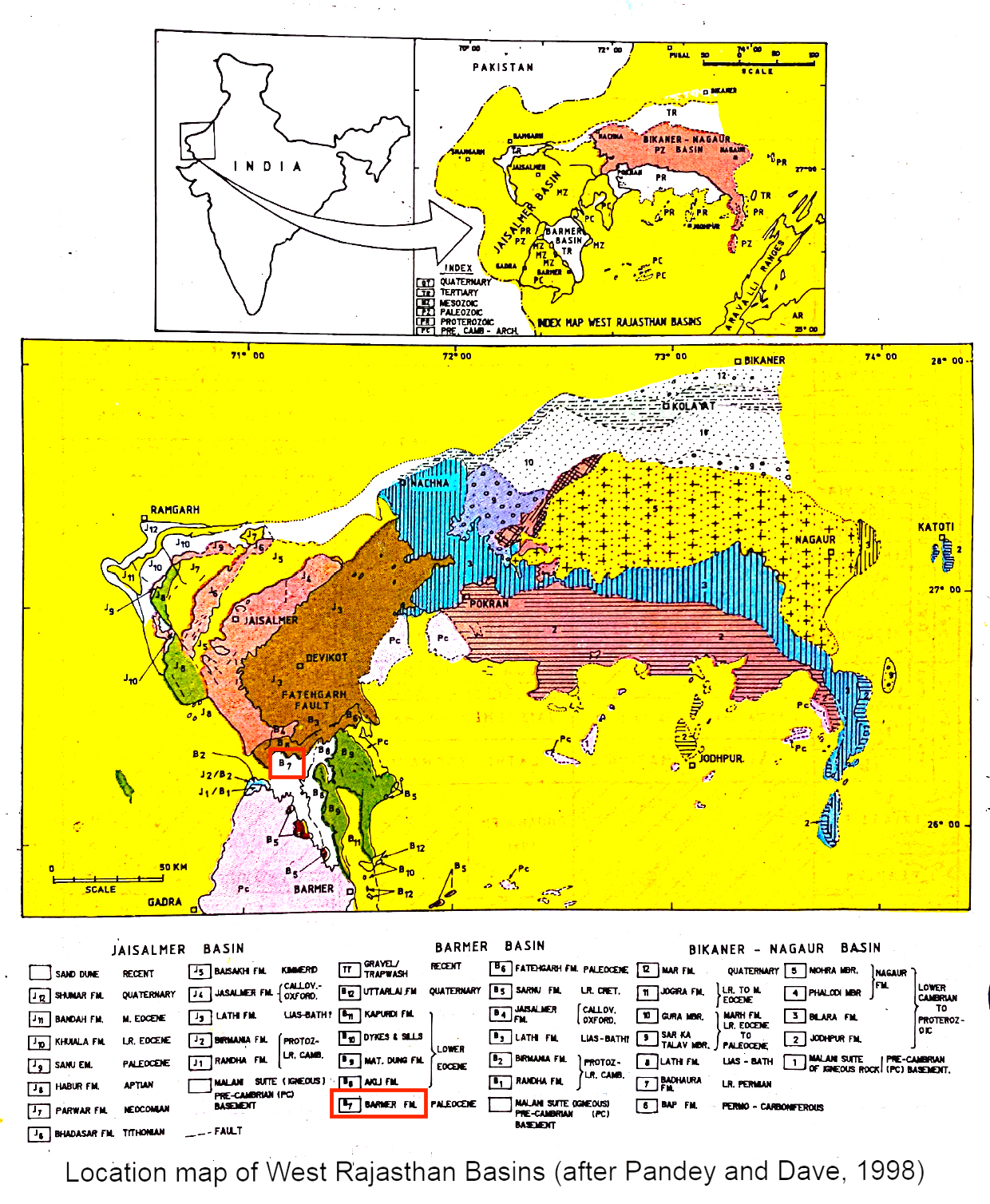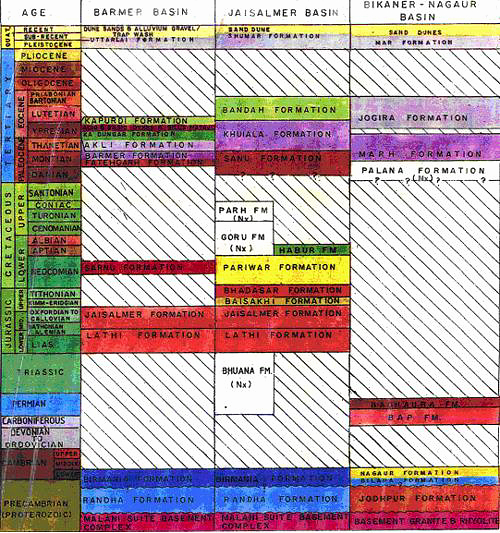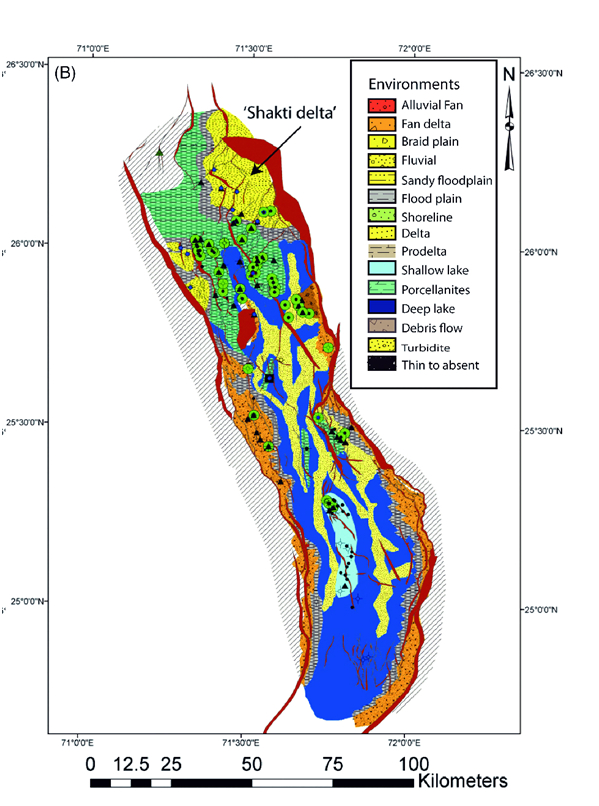Barmer Hill Fm
Type Locality and Naming
OUTCROP: Type section is in Outcrops at Lunu Hill Section. [Original Publication: Dasgupta, S.K., 1975 : Revision of the Mesozoic-Tertiary Stratigraphy of the Jaisalmer basin Rajasthan : Ind. Jour. Earth Sci. vol.2 no.1, pp. 77-94]. Reference section: Barmer Hill Section
Synonyms: Barmer Hill Fm. White and grey silicified sandstones, occuring at the top of temple hill at Barmer, were named as "Balmir beds" by Blanford (1876). La-Touche (1902) extended this name to some other sandstone outliers in the Barmer District. Srivastava and Srinivasan (1963) described Balmir beds as Barmer Sandstone. Dasgupta et al., (1973), for the first time, demonstrated its mappability and divided it into two members: Barmer Hill Member and Mandai Scarp Member. It has been adopted by Mishra et al., (1993). Elsewhere, 5 members are used.
[Figure 1: Location map of West Rajasthan Basins (after Pandey and Dave, 1998)]
Lithology and Thickness
Sandstone. At the type section, the formation comprises mainly an arenaceous sequence with plant fossils at places. This has been divided into five members viz., lower Barmer Hill Member siltstone (about 26 m at Barmer Hill section) and leaf impressions, Maidai Scarp Member current-bedded, white to pink color sandstone, Kotara Member, Bariyada Member, Genhu Hill Member. The maximum thickness at Barmer Hill is about 80m.
Relationships and Distribution
Lower contact
Stratigraphically, it has a conformable relationship with underlying Fatehgarh Fm.
Upper contact
The upper boundary is conformable with overlying Akli Fm.
Regional extent
The formation is distributed in an arcuate shape along the southern and western part of the Barmer basin in the hills around Barmer town and through Lunu hill up to Kotra in the north. In the southern part and along western margin, the sandstone beds are very coarse, with plant fossils but towards north formation becomes finer. It is silty at Kotra and further north it grades into ochreous clayey beds.
[Figure 2: Stratigraphic Correlation of Rajasthan Basins (from dghindia.gov.in)]
GeoJSON
Fossils
The formation, devoid of fauna, has common occurrence of plant fossils. Shah and Kar (1971) recorded a rich playnoflora. Angiosperm leaf impressions from variegated claystone and silty sandstone of Mandai Scarp section include Vitex neogundo, Anogeissus pendula and Premina latifolia.
Age
Depositional setting
Additional Information
Oil and Gas: Barmer Hill Fm reservoirs (Figure) are highly variable, have mixed wettability, and consist of three dominant facies. One facies consists of poorly cemented quartz macro-porous arenites with up to 30% porosity and multi-darcy permeability in the Shakti delta along the northeastern margin.
Second facies consists of the microporous diatomites developed in clastic-poor high blocks. These facies are oil productive in both the Mangala and Aishwarya fields, but require hydraulic fracturing to produce economically (Chowdhury et al., 2011)
Third major reservoir, and perhaps the dominant reservoir in the basin center, consists of highly variable conglomeratic to fine-grained, poorly sorted, and frequently highly cemented turbidite and distal fan-delta deposits. These reservoirs seldom have permeabilities in excess of 100 mD and are frequently micro-porous, with permeabilities of less than 1 mD. (Dolson et al., 2015 : The Discovery of the Barmer Basin, Rajasthan, India, and its petroleum geology : AAPG Bulletin, 99 (issue 3, 1 Mar 2015), pp. 433-465; https://doi.org/10.1306/10021414045)
[Figure 3: Paleogeographies of the Barmer Hill Formation (Dolson et al., 2015)]


